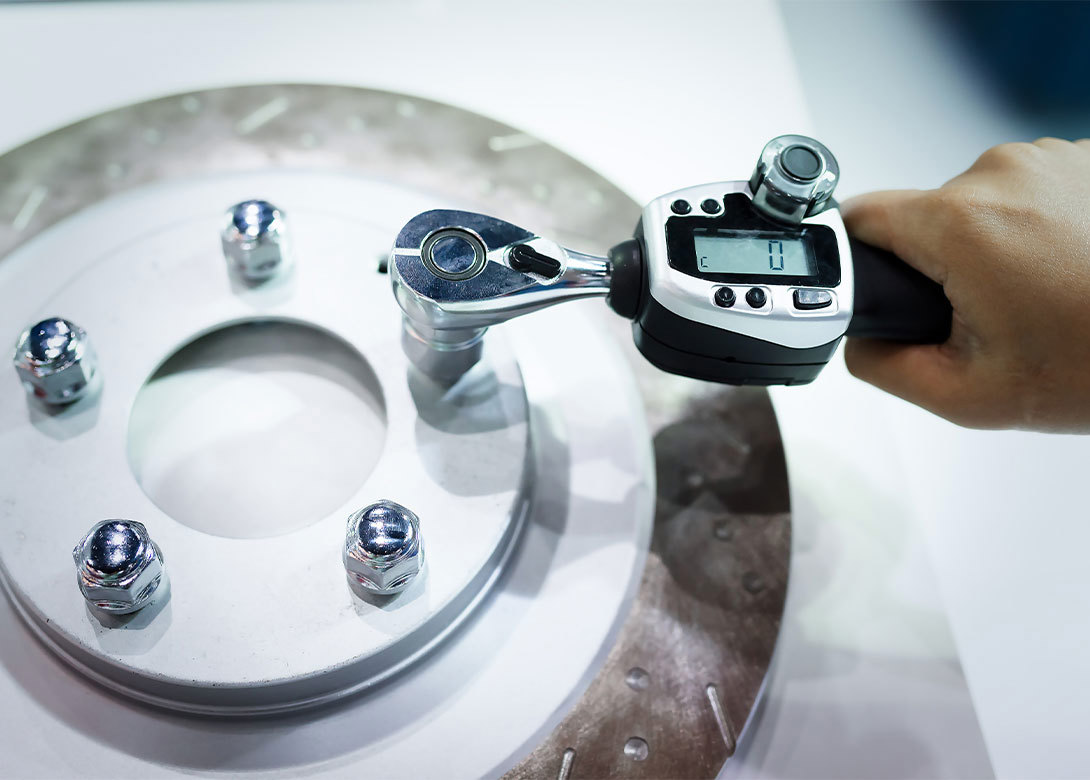
By Dr Bill Eccles of Bolt Science
It is not unusual for there to be uncertainty as to the installed integrity of a bolted joint. A common check, completed to assess whether a nut has been tightened to the correct torque, or whether some loosening has occurred, is known as a residual torque measurement.
This method involves the measurement of the torque needed to rotate a bolt, or nut, by a small angle, typically two to five degrees, in the tightening direction and is normally used by most industries to assess the torque value of a previously tightened fastener.
The advantage of the residual torque approach is that retightening the fastener after the check is no longer required; measuring the ‘break-loose’, or untightening torque, won’t be the same as the original tightening torque, in addition to which, re-tightening would be needed after the measurement is completed. ‘Break loose’ is the term given to measurement of the torque in the untightening direction and is less than the residual torque for a newly tightened fastener. When untightening the bolt, or nut, a lower torque than the tightening torque is needed, since the thread extension torque component assists in the untightening; a parallel can be drawn with it being easier to push an object downhill than it is uphill.
While the term residual torque is usually used, it is somewhat of a misnomer, since there is little, or no torque present in a tightened fastener, rather, the torque measured is a function of the preload in the fastener, the thread geometry, and the friction conditions present. Normally the movement of a fastener is sensed by the person completing the test.
Although not widespread, there are torque audit wrenches available that measure the torque value after a couple of degrees of rotation. Using such a wrench removes the human judgement involved. Alternatively, the fastener and joint can be marked and the nut, or bolt head, rotated until movement is noted. One issue that can arise on longer bolts is that if the nut is only rotated a small amount, the friction grip between the nut and the surface is broken without overcoming the friction grip between the threads. This results in a significant measurement error.
One common reason for completing residual torque measurements is that some concern has been raised about the integrity of assembled joints. This may be due to a loosening issue having been experienced on one or more joints, or, perhaps, bolt fatigue failures having occurred. Also, the longer the time between completing a residual torque measurement and an installation date, the greater the uncertainty that the torque measured remains a faithful representation of the bolt preload. Over time, on most joints, especially those without a grease having been applied, friction tends to increase. Such a friction increase results in a higher torque being needed to rotate the fastener, which can mask the fact that the bolt preload has dropped below acceptable limits.
Having set out some of the limitations of the approach, residual torque measurements can, nonetheless, often provide crucial information on whether a larger structural integrity issue is present, though, usually, there are few alternatives to completing such checks in order to decide on what action, if any, is needed.
While there may be several other reasons why bolt preload can reduce over time, the detail of these might form the subject of future articles. Online training courses on the technical aspects of bolting are available from Bolt Science.

Will joined Fastener + Fixing Magazine in 2007 and over the last 12 years has experienced every facet of the fastener sector – interviewing key figures within the industry and visiting leading companies and exhibitions around the globe. Will manages the content strategy across all platforms and is the guardian for the high editorial standards that the brand is renowned.





